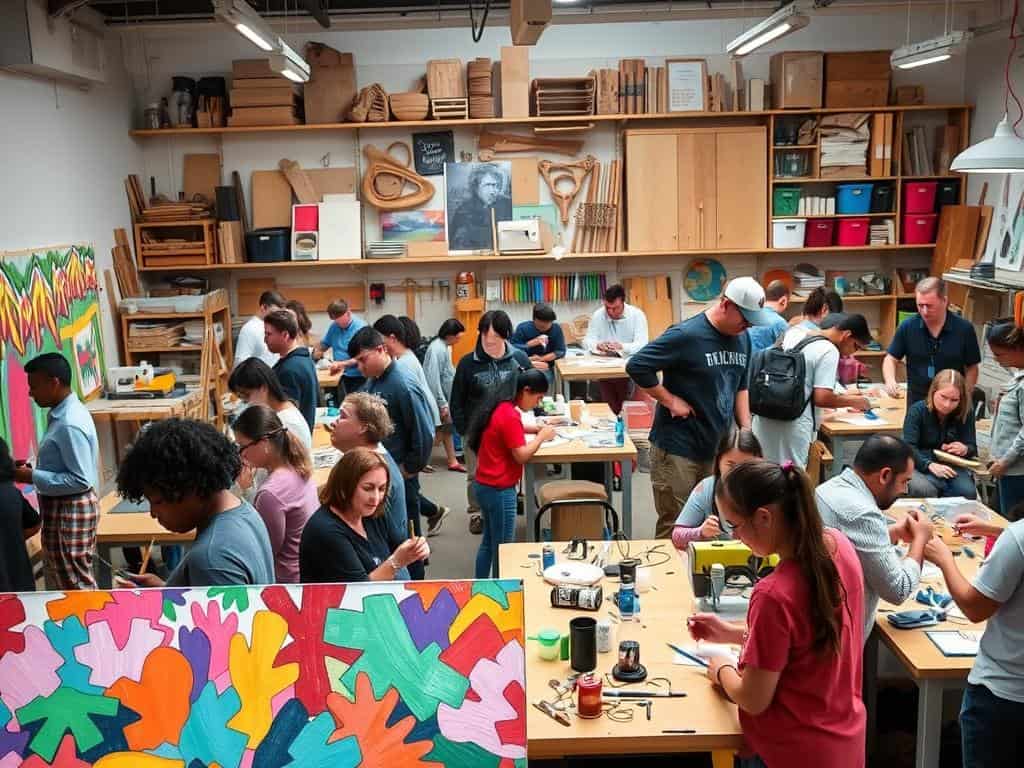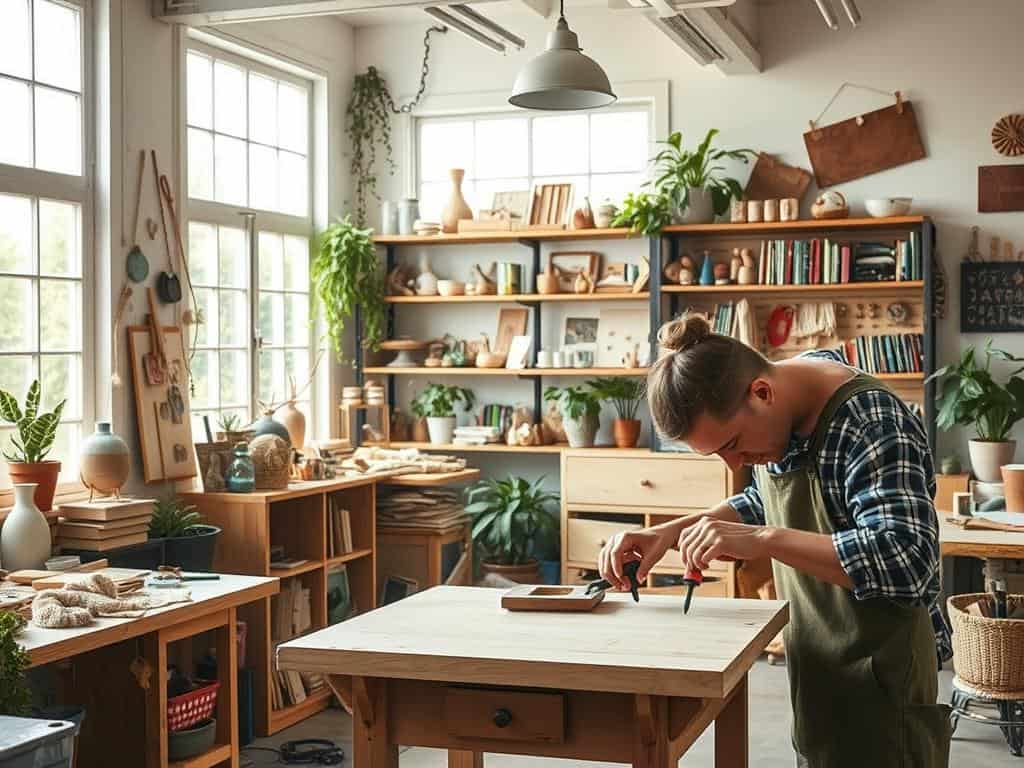I remember feeling a wave of satisfaction when I finished my handmade wooden shelf. It was a project I started because store-bought shelves didn’t fit my needs or budget. I found joy not just in making something, but also in being part of the DIY culture.
This culture celebrates making things yourself and sharing them with others. It’s growing because people want to express themselves and reject mass-produced items. Being part of this community means more than just creating; it connects us with others who value innovation and learning through doing.
Key Takeaways
- The DIY movement emphasizes creativity and personal expression.
- There’s a renewed interest in handmade products within the maker culture.
- Many are seeking self-sufficiency, moving away from consumerism.
- Technology plays a crucial role in facilitating DIY projects.
- DIY fosters community engagement and collaboration.
- Experiential learning is at the heart of the DIY ethos.
Understanding the Growth of DIY Culture
The DIY culture has seen a big change, sparked by people working together and new ideas. Many things have helped this culture grow. Things like maker spaces, using new technology in projects, and learning by doing are key.
The Rise of Maker Spaces
Maker spaces are important spots for creative minds. They provide access to tools and resources that used to be hard to find. Here, people can work together.
Sharing knowledge and skills in these spaces helps everyone learn. Workshops let people bring their ideas to life with hands-on projects. This focus on community not only helps creativity bloom but also builds a sense of belonging.
The Role of Technology in DIY
Technology is key in today’s DIY projects. With high-tech tools and software, creators can take their work to the next level.
Tools like 3D printers and laser cutters make it possible to quickly bring ideas to life. This tech-savvy approach in DIY inspires people to explore their creativity. They come up with new solutions to everyday problems.
The Educational Influence of DIY
The way we learn is changing to include the spirit of DIY. Schools are mixing in these hands-on methods into their lessons.
By doing projects themselves, students gain real skills in a creative way. This learning style helps them understand their subjects better. It also sparks a love for learning and being creative that lasts a lifetime.
The Impact of the DIY Movement on Society
The DIY movement changes more than just personal projects. It shapes our economy and brings people together. It lets people use their creativity and feel they belong to their community. The wide effects of DIY show how it benefits society.
Economic Benefits of DIY
I see a big economic impact from the DIY movement. People are doing their own home improvements and crafts. This helps local economies. By making instead of buying, they save money and inspire community innovation. These benefits come from wanting to fix and reuse materials in new ways.
DIY as a Form of Self-Expression
DIY lets people show who they are through their projects. It gives a special way to share personal style and ideas. People can try new things and feel happy with what they create. Making things by hand adds personal meaning and enriches the experience.
Community Engagement through DIY
DIY brings people together to share and work on projects. I’ve seen workshops where people meet to learn and share knowledge. These activities make community ties stronger. They promote a culture of teamwork. DIY not just builds skills but connects people to the values of making and creating.

Conclusion
The DIY culture is making big changes in how we create and come together. It shows that making things by hand is more than just a hobby. It’s about learning to rely on ourselves and coming up with new ideas. Now, with maker spaces and classes that focus on doing things yourself, DIY’s impact is growing everywhere.
DIY culture has a big role in personal and community growth. It does more than help us make cool stuff. It brings people together, creating strong bonds and a sense of belonging. This feeling of connectedness is what makes DIY so special.
This movement is always changing, showing us the importance of being creative, working together, and using what we have in smart ways. Thinking about DIY’s possibilities excites me. It gives power to each of us and strengthens our communities, making our future look promising. The DIY way of life teaches us valuable lessons for everyday living.



